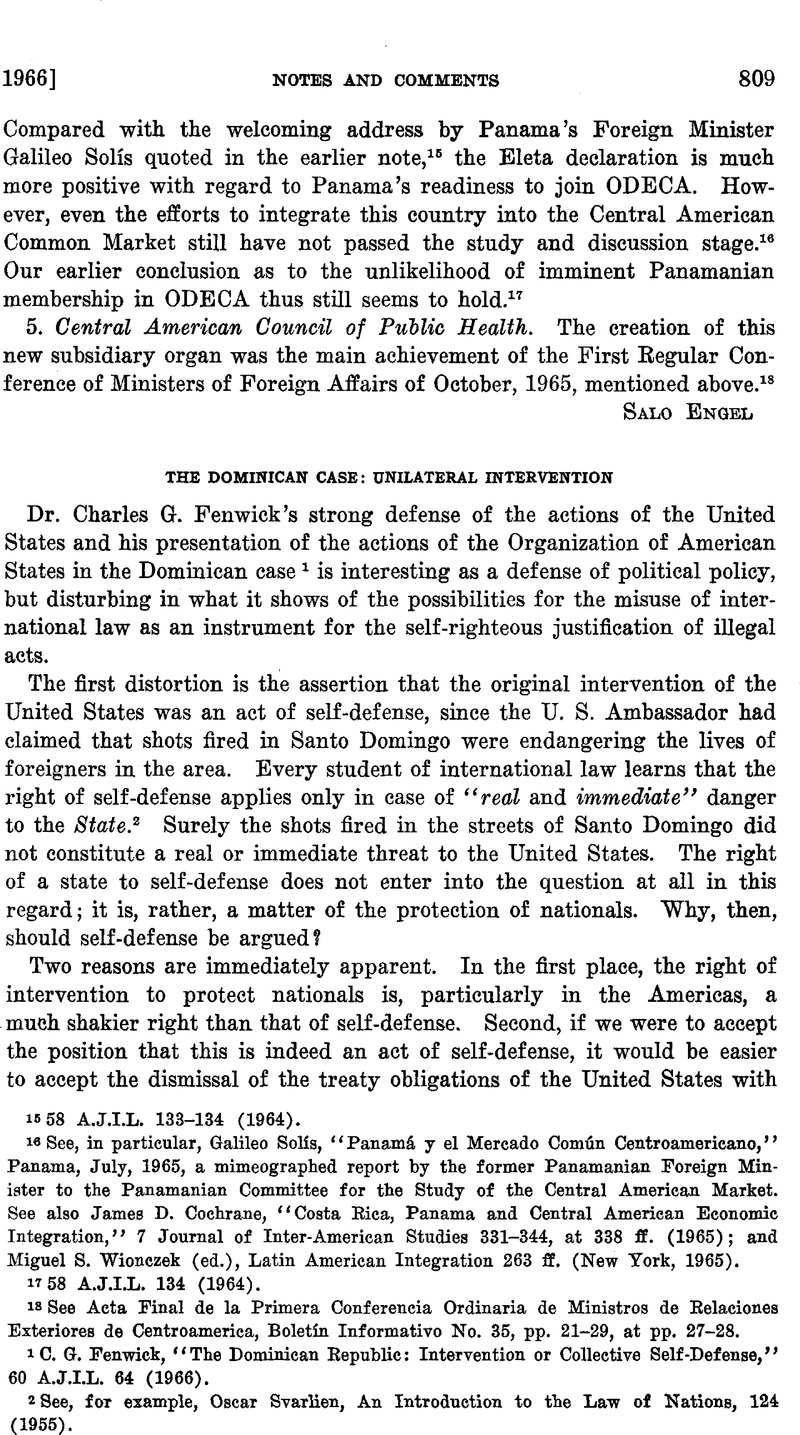No CrossRef data available.
Article contents
The Dominican Case: Unilateral Intervention
Published online by Cambridge University Press: 28 March 2017
Abstract

- Type
- Notes and Comments
- Information
- Copyright
- Copyright © American Society of International Law 1966
References
1 C.G. Fenwick, , “The Dominican Republic: Intervention or Collective Self-Defense,” 60 A.J.I.L. 64 (1966)Google Scholar.
2 See, for example, Oscar Svarlien, An Introduction to the Law of Nations, 124 (1955).
3 Quoted in Fenwick, loc. cit. 65.
4 The question might be raised, of course, as to whether the announcement of the growth of Communist influence is a self-fulfilling prophecy. If it is stated that theonly two choices are U. S. intervention and Communist take-over, the position of theCommunists is certainly enhanced with those who suffer from the intervention.
5 U.N. Security Council Doc. S/5193, Oct. 25, 1962.
6 Fenwick, loc. cit. 66.
7 That is to say, the protection of human rights is listed in the Charter as one of the basic goals of the Organization, but the argument can be, and has in the past been, made that this is not intended to state a basis for collective action. See, for example, the arguments advanced in Antonio Gomez Eobledo “Le Crisis Actual del Sisteme Interamericana,” Foro Internacional 176 (January-March, 1963).
8 O.A.S. Doc. OEA/Ser. G/II, C-Sq-397, p. 89; O.A.S. Doc. OEA/Ser. G/VII, CE/RC, VI-10, p. 27. 1 60 A.J.I.L. 369 (1966).




